Honors Chemistry - Electron Configurations and Adaptations
This file provides detailed instructions on drawing orbital diagrams, understanding electron configurations, and the significance of noble gases in chemistry. It's a useful resource for students studying chemistry concepts and atomic structure. This guide covers essential electron configurations and their importance in elements.
Edit, Download, and Sign the Honors Chemistry - Electron Configurations and Adaptations
Form
eSign
Add Annotation
Share Form
How do I fill this out?
To fill out this form, begin by entering your name, date, and block. Next, complete the 'Do Now' section by drawing the orbital diagrams for the given atoms. Follow the prompts to input electron configurations as required.
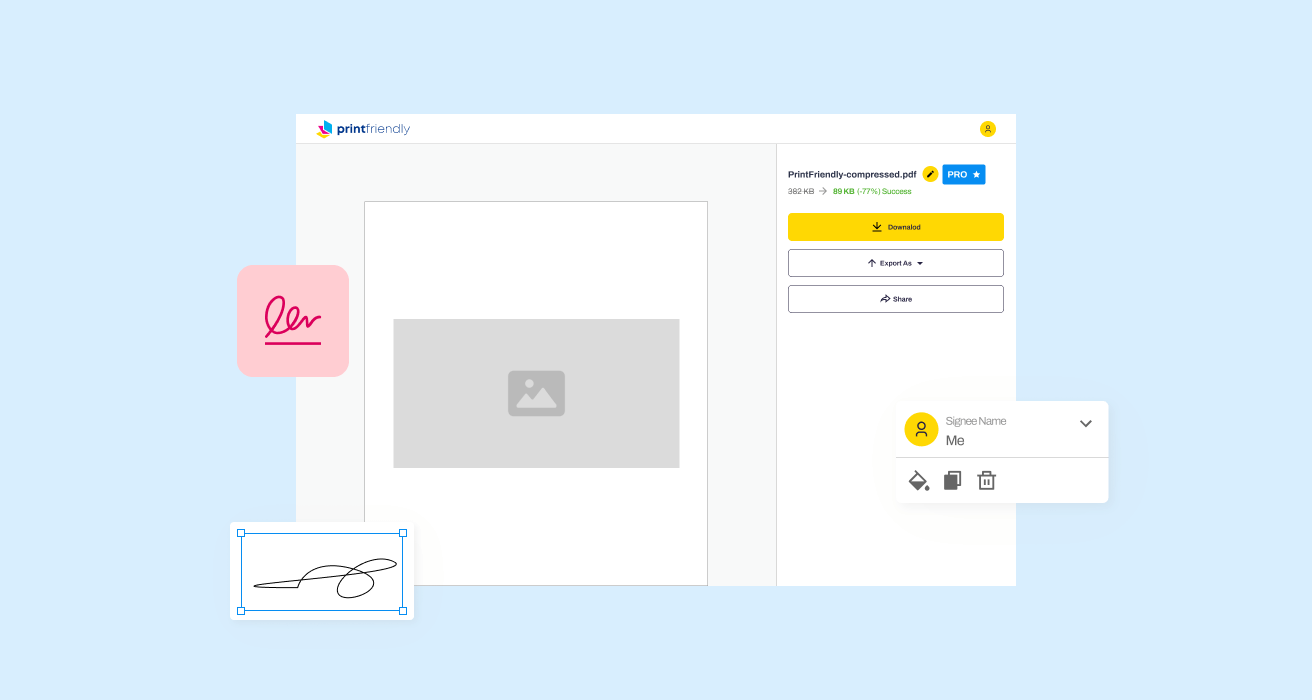
How to fill out the Honors Chemistry - Electron Configurations and Adaptations?
1
Enter your personal information at the top of the form.
2
Draw the orbital diagrams for the specified neutral atoms.
3
Input the long form and abbreviated electron configurations.
4
Complete the table for noble gases and their configurations.
5
Review your entries and submit the form when finished.
Who needs the Honors Chemistry - Electron Configurations and Adaptations?
1
High school chemistry students for their homework assignments.
2
College students studying advanced chemistry concepts.
3
Teachers looking for teaching resources on atomic structure.
4
Tutors assisting students in understanding electron configurations.
5
Individuals preparing for chemistry examinations.
How PrintFriendly Works
At PrintFriendly.com, you can edit, sign, share, and download the Honors Chemistry - Electron Configurations and Adaptations along with hundreds of thousands of other documents. Our platform helps you seamlessly edit PDFs and other documents online. You can edit our large library of pre-existing files and upload your own documents. Managing PDFs has never been easier.

Edit your Honors Chemistry - Electron Configurations and Adaptations online.
Editing this PDF on PrintFriendly is quick and easy. Simply load the PDF and use our editing tools to make any necessary changes. You can adjust text, add annotations, or modify configurations effortlessly.

Add your legally-binding signature.
Signing this PDF on PrintFriendly can be done in just a few clicks. Use our intuitive interface to add your signature where required. Once complete, you can save or share the signed document.
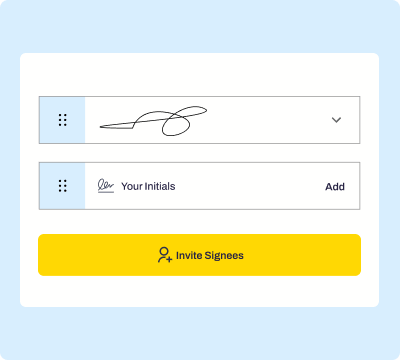
Share your form instantly.
Sharing your PDF on PrintFriendly is seamless. Use the sharing options provided to distribute your edited document to others. You can easily send it via email or share it through social media platforms.
How do I edit the Honors Chemistry - Electron Configurations and Adaptations online?
Editing this PDF on PrintFriendly is quick and easy. Simply load the PDF and use our editing tools to make any necessary changes. You can adjust text, add annotations, or modify configurations effortlessly.
1
Open the PDF you wish to edit on PrintFriendly.
2
Use the editing tools to modify text or annotations as needed.
3
Review your edits to ensure accuracy.
4
Save the changes made to your PDF.
5
Download or share the edited PDF with others.

What are the instructions for submitting this form?
To submit this form, ensure all fields are accurately filled. You may submit it through the designated class portal or email it directly to your instructor. Additionally, verify submission guidelines regarding whether to print and submit a physical copy or to submit online.
What are the important dates for this form in 2024 and 2025?
Important deadlines related to this form are forthcoming. These will include submission dates for assignments, examinations, and potentially other chemistry-related activities for the years 2024 and 2025. Keep an eye out for updates as they may be subject to change.

What is the purpose of this form?
The purpose of this form is to collect student responses regarding their understanding of electron configurations and atomic structure. By filling out this form, students articulate their grasp of the subject matter, which is crucial for their academic advancement in chemistry. Understanding these concepts lays a foundation for more advanced topics in science and engineering.

Tell me about this form and its components and fields line-by-line.

- 1. Name: The name of the student completing the form.
- 2. Date: The date on which the form is filled out.
- 3. Block: The class/block in which the student is enrolled.
- 4. Electron Configuration: Sections for students to draw and fill in electron configurations.
What happens if I fail to submit this form?
If you fail to submit this form, your responses will not be recorded, which may impact your understanding evaluation in the course.
- Missing Submission: Not submitting means you miss out on feedback and assessment.
- Impact on Grades: Failure to submit could negatively affect your overall performance evaluation.
- Lack of Understanding: Without submission, it may be hard to gauge your grasp of the material.
How do I know when to use this form?

- 1. Class Assignments: Fill out this form as part of your homework or project.
- 2. Examinations: Use this form during assessments to show your understanding.
- 3. Study Exercises: Employ this form for practice at home.
Frequently Asked Questions
How do I edit my PDF?
To edit your PDF, simply load it into PrintFriendly and use the available editing tools.
Can I sign my PDF in PrintFriendly?
Yes, you can add a signature to your PDF easily within PrintFriendly.
How do I download my edited PDF?
Once you make your edits, click on the download button to save your PDF.
Is it necessary to register to edit?
No registration is needed to edit your PDFs on PrintFriendly.
Can I share my PDF directly from PrintFriendly?
Yes, use the share features to distribute your PDF via email or social media.
What file formats does PrintFriendly support?
PrintFriendly supports PDF format for editing and sharing.
Is there a limit on the number of PDFs I can edit?
You can edit as many PDFs as you need without restriction.
How long does it take to edit a PDF?
Editing a PDF on PrintFriendly is quick and can be done in minutes.
What types of documents can I edit?
You can edit any PDF document using PrintFriendly's editing tools.
Are the edits I make permanent?
Yes, once you download the edited PDF, all the changes will be saved.
Related Documents - Chemistry Electron Configurations
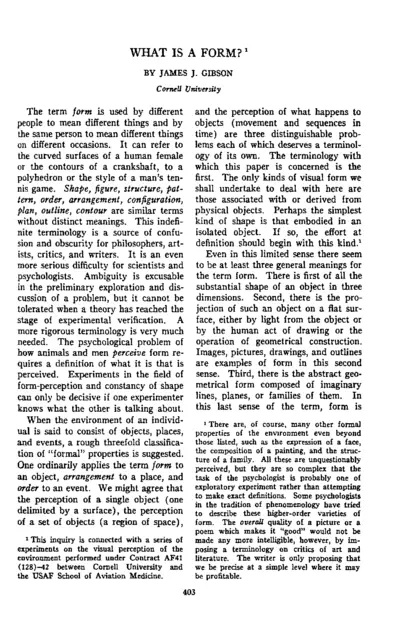
Understanding Form and Form-Perception by James J. Gibson
This document explores various definitions and theories of form, emphasizing the need for precise terminology. It delves into experiments related to the visual perception of form, distinguishing between solid and surface forms. The text critiques traditional views and presents new perspectives on form-perception.
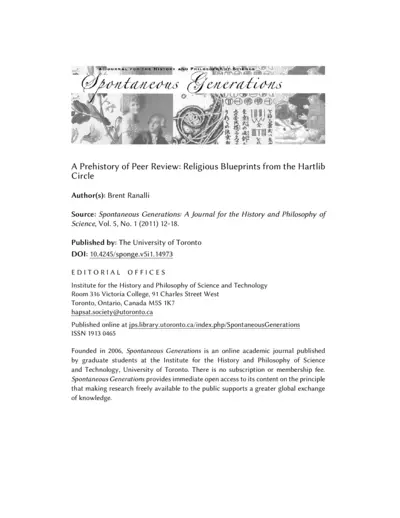
Prehistory of Peer Review: Religious Blueprints
This file explores the origins and development of peer review in science, tracing its roots to religious scholars in the Hartlib circle. It discusses the influence of the Royal Society of London and other early scientific organizations. The content is based on extensive historical research and analysis.
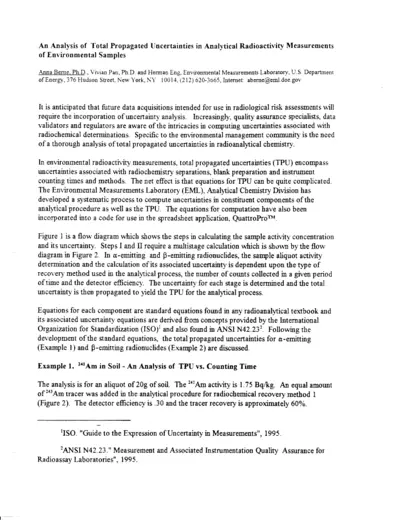
Analysis of Uncertainties in Radioactivity Measurements
This document discusses the uncertainties in analytical radioactivity measurements of environmental samples. It includes detailed equations and methods for calculating total propagated uncertainties. Useful for quality assurance specialists, data validators, and radiochemical analysts.

IRMS Sample Analysis Request Form Guidelines
This file contains instructions and details about the IRMS Sample Analysis Request Form. It is used to request sample analysis in the Laboratory for Isotopes and Metals in the Environment. Ensure you have the required approvals before using the IRMS.
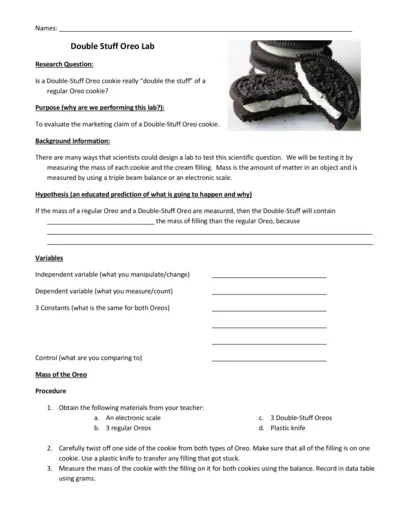
Double Stuff Oreo Cookie Science Experiment
This file contains details and instructions for conducting a science experiment to evaluate the marketing claim of Double-Stuff Oreo cookies. Users will measure the mass of regular and Double-Stuff Oreo cookies along with their fillings. It guides users through the process of data collection, calculation, and analysis using the scientific method.
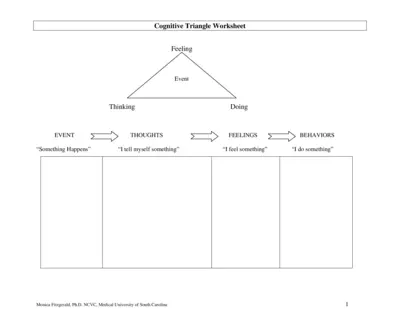
Cognitive Triangle Worksheet Instructions and Details
This file provides an overview and detailed instructions on how to use the Cognitive Triangle Worksheet. It helps users understand the relationship between their thoughts, feelings, and behaviors. Perfect for those interested in cognitive-behavioral strategies.

Engaging Doctor Pretend Play Printables for Kids
Transform playtime with free doctor pretend play printables designed for kids. These fun tools foster creativity and learning through imaginative play. Perfect for children from toddlers to first graders.
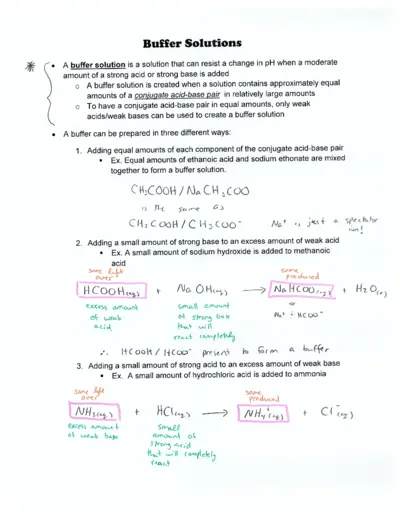
Buffer Solutions: Understanding Their Functionality
This file provides comprehensive insights into buffer solutions, including their preparation and pH resistance mechanisms. Ideal for chemistry students and professionals seeking to understand buffer systems. Practice problems included for hands-on learning.
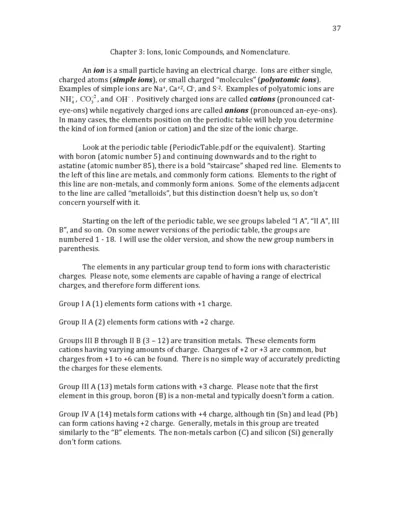
Ions and Ionic Compounds: Understanding Nomenclature
This file provides a comprehensive overview of ions, including their types, charges, and nomenclature rules. It covers essential details such as simple and polyatomic ions, and how to name them correctly. Perfect for students and professionals looking to deepen their understanding of ionic compounds.
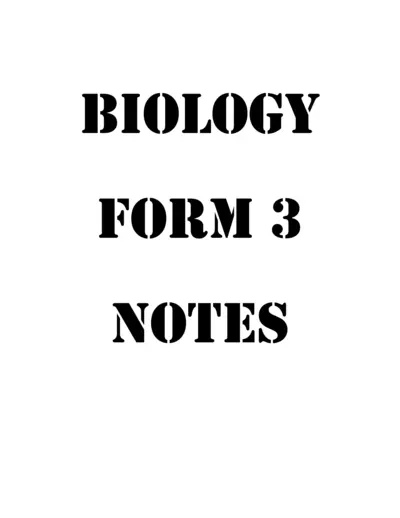
Biology Form 3 Notes and Instructions
This file contains detailed biology notes for Form 3 students. It covers essential topics such as organism classification and characteristics of various kingdoms. Perfect for studying and exam preparation.
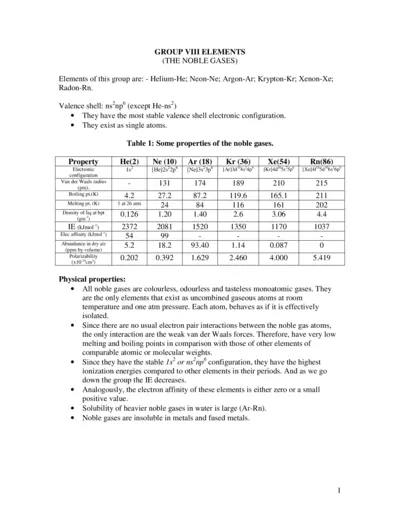
Noble Gases Properties and Chemical Behavior
This document provides a comprehensive overview of the noble gases, their properties, and chemical behaviors. It includes information on individual gases, their electronic configurations, and compound formations. Ideal for students and professionals in chemistry.
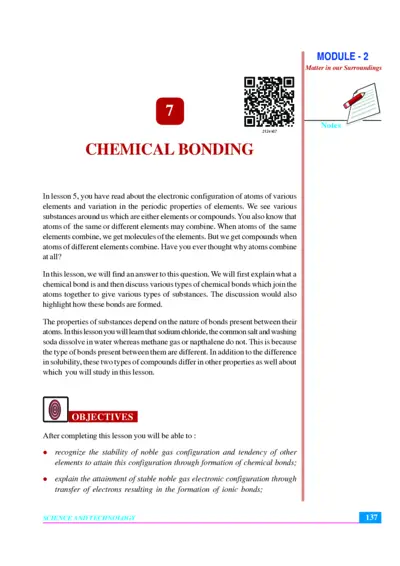
Chemical Bonding and Matter in Our Surroundings
This file provides detailed insights into chemical bonding, including ionic and covalent bonds. It covers the principles of matter in our surroundings and the electronic configurations of elements. Ideal for students and educators in chemistry to enhance their understanding.